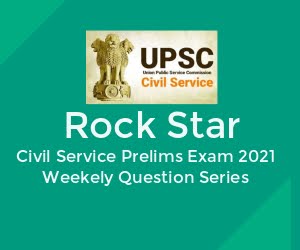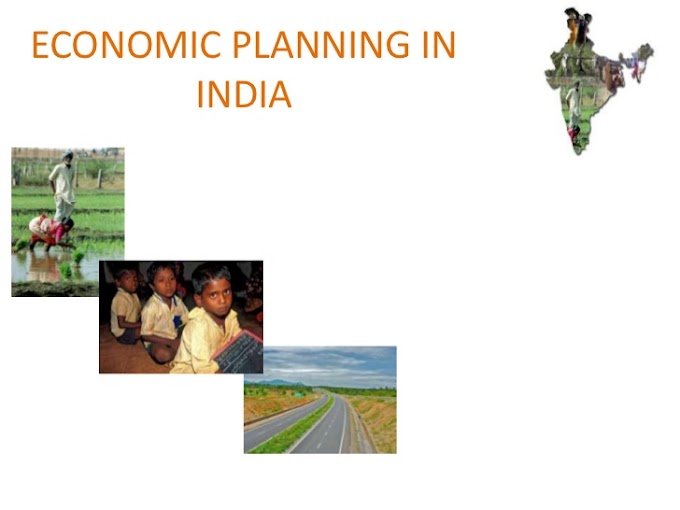M.K. Gandhi (1869 – 1948):
- The ‘Father of the Nation’ was born at Porbandar (Kathiarwar) on October 2, 1869. he was the son of Karamchand and Putlibai Gandhi. He married Kasturba in 1883.
- Proceeded to England in 1888 to study law and returned to India in 1891.
- He failed as a practicing lawyer both at Rajkot and in Bombay.
- In 1893, he proceeded to Natal, South Africa, as the lawyer of a firm of Porbandar Muslims.
- He was appalled at the racial discrimination by the whites in that country. There he founded a political organization known as ‘National Indian Congress’ and also started a newspaper called ‘Indian Opinion’. He formed Phoenix Farm near Durban in 1904.
- Returned to India on Jan 9, 1915.
- In 1916, he founded the Sabarmati Ashram at Ahmedabad.
- Champaran Satyagraha (1917) : There the European planters forced the cultivators to cultivate indigo on 3 / 20th of their holdings (called Tinkathia System). But when indigo became unremunarative, the European planters imposed higher taxes to compensate their losses in the International market.
- Gandhiji, with the help of Rajendra Prasad and others, encouraged the peasants to offer Satyagraha. Gandhiji was arrested and then made a member of the Enquiry Committee of Jun 1917. The Champaran Agrarian Act finally abolished the TinKathia system and compensated the peasants for the raised dues imposed on them.
- Ahmedabad Mill Strike (Mar, 1918) : The dispute was between the mill – owners and the workers over the ‘Plague Bonus’ which the mill – owners wanted to withdraw once the epidemic was over. The workers troubled by inflation wanted adequate compensation.
- Gandhiji initially persuaded the mill – owners and workers to agree to arbitration by a tribunal but the mill – owners withdrew after commitment. Here Gandhiji first used the weapon of ‘Hunger Strike’. After this, the mill – owners were pressurized into accepting the tribunal award of 55 percent increase.
- Kheda Satyagraha (1918) : The peasants were in extreme distress due to the failure of crops and the government ignored their appeals for die remission of land revenue. The peasants of Kheda were already hard pressed because of plague, high prices and drought.
- Appeals and petition having failed, Gandhiji advised the withholding of revenue and asked the peasants to fight unto death. After the Government directed that the revenue should be recovered only from those peasants who could pay, the movement was withdrawn.
Champaran, Ahmedabad and Kheda
The story of Champaran (Bihar) begins in the early 19th century when European planters had involved the cultivators in agreements that forced them to cultivate indigo in 3/20th of their holdings (Tin-Kathia). Bui when indigo became unremunerative, the European planters imposed higher taxes to compensate their losses in the international trade at that lime. Gandhi (in July 1917) was successful in abolishing the Tin-Kathia system and refund was made to the cultivators in wages.
In Ahmedabad (March 19/18) the dispute was between the null owners and workers over the ‘plague bonus’ which the former wanted to withdraw once the epidemic was over. The workers troubled by inflation wanted adequate compensation. Gandhi initially persuaded the mill owners and workers to agree to arbitration by a tribunal but the mill owners withdraw alter commitment. Gandhi then advised the worker to go on strike &he under look hunger strike after which the mill owners were pressurised into accepting the tribunal award of 35 percent increase in wages
The peasants of Kheda district (1917-1918) were in extreme distress due to a failure of crops and the government ignored their appeals for the remission of land revenue. The peasants of Kheda were already hard pressed because of plague, high prices and drought. Appeals and petition having tailed Gandhi advised the withholding of revenue and asked the peasants to fight unto death. After the Government directed that revenue should be recovered only from those peasants who could pay. the movement was withdrawn.
- Gandhi undertook his first hunger strike Ahmedabad (1918) for the mill wage hike of workers
- His first Civil Disobedience movement was the Champaran Satyagraha
- His first all-India Satyagraha was the Rowlatt Satyagraha
- His first Non-Cooperation Movement was the Kheda Satyagraha
Dadabhai Naoroji (1825 – 1917)
- First to demand ‘Swaraj’ from the INC Platform (Calcutta session, 1906).
- Wrote a bock ‘Poverty & Un – British Rule in India’ (in 1901) in which he brought out the connection between the draining of wealth from India by the British and rampant poverty in India.
- Also known as ‘Indian Gladstone’ and ‘Grand Old Man of India’.
- Selected to ‘House of Commons’ on Liberal Party ticket (First Indian to do so).
Gopal Krishna Gokhale (1886 – 1915)
- Gandhiji considered him as his political guru.
- He served as the President of the INC at its Banaras session in 1905.
- Laid the foundation of Servants of Indian Society in 1905. (Objective was to train people who would work as national missionaries).
Bal Gangadhar Tilak (1857 – 1920)
- Collaborated with Agarkar, and set up institutions to give cheap education to people.
- First nationalist leader who tried to establish a close contact with the masses.
- Started Akharas, Lathi clubs and anti – cow killing societies to built his rapport.
- Founded two newspapers – The Maharatta (in English) and Kesari (in Marathi).
- First congress leader who went to prison several times. He joined the INC in 1891.
- Formed the Bal, Pal, Lai group of extremists and caused a split in the Surat Congress in 1907.
- Founded the Home Rule League in 1916, and helped in ushering in the Lucknow Pact and the Reforms Act at the Amritsar Congress in 1919.
- Valentine Shirol described him as the ‘Father of Indian Unrest’.
- In the Nagpur session of 1920, the INC demanded Swaraj (after Tilak’s slogan only).
- An erudite scholar. His books are ‘The Arctic Home of Vedas’ & ‘Gita Rahasya’.
B. R. Ambedkar (1891 – 1956)
- He was a jurist, a statesman, a social reformer and a leader of the depressed classes.
- He was born in Mahar caste in Mahu (M.P) in 1891. He went for higher studies to England and America. He was the first graduate of Mahar caste.
- He participated in all the three Round Table Conferences. He signed Poona Pact with Gandhiji in 1932.
- From 1942 to 1946, he was in the Executive Council of the Governor General. He organized the Indian Labour Party, Scheduled Caste Federation and People’s Education Society.
- He was the chairman of the Drafting Committee of our Constitution.
- He also piloted the Hindu Code through the Indian Legislature.
- From 1947 to 1951, he was a law minister in Nehru’s cabinet.
- Towards the end of his life he embraced Buddhism.
Maulana Abul Kalam Azad (1890 – 1958)
- He was bora in Mecca in 1890. For higher education he went to the Al Azhar University at Cairo.
- He joined the INC during the Swadeshi movement.
- He began two weeklies, Al Hilaland Al – Balagh.
- He was made the President of the Khilafat Committee in 1920. He became the President of the Congress session of 1923 at Delhi.
- He led the Congress delegation during the Shimla Conference in 1945. He also led the delegation during the Cabinet Mission Plan.
- He was elected the member of the Constituent Assembly in 1946. He was the Education Minister in the Interim Government and also Independent India’s first Education Minister.
- He was also instrumental in the foundation of U.G.C. and IIT – Kharagpur.
- His book India Wins Freedom evoked much controversy.
Khan Abdul Ghaffar Khan (1890 – 1988)
- Popularly known as Frontier Gandhi, Badshah Khan or Sarhadi Gandhi.
- Founded an organization Khudai Khidmatgars. It was an organization of non – violent revolutionaries which was also known as ‘Red Shirts’.
- He also published a newspaper, Pakhtoon.
- Ghaffar Khan vehemently opposed partition.
- He was awarded Bharat Ratna in 1987 by the Government of India.
Subhash Chandra Bose (1897 – 1945)
- Popularly known as Netaji, was born on Jan 23, 1897 at Cuttack.
- He passed the Indian Civil Services Examination in 1920, but left it on the Gandhiji’s call of Non – Cooperation Movement.
- He founded the Independence for India League with Jawahar Lai Nehru.
- In 1938, he was elected the President of the INC ai its Ilaripura session and in 1939, he was elected President of its Tripuri session. But he had to resign from Tripuri due to differences with Gandhiji.
- He founded the Forward Block in 1939.
- In 1941, he escaped to Berlin and met Hitler. In 1943, he took charge of Indian National Army in Singapore and set up the Indian Provisional Government there. He gave the war cry of ‘Dilli Chalo’.
- He addressed Mahatma Gandhi as the Father of the Nation; He gave the slogan of ‘Jai Hind’. He wrote his autobiography ‘The Indian Struggle’.
- He supposedly died in a plane crash on Aug 18, 1945.
Jawaharlal Nehru (1889 – 1964)
- He was the first Prime Minister of Independent India and is known as the architect of Modern India.
- He was born in Allahabad on Nov 14, 1889.
- In 1928, he became the General Secretary of the INC and in 1929 its President. At the Lahore session, under his President ship was passed the Independence resolution.
- He was the Prime Minister of India from 1947 to 1964.
- He was the author of the Doctrine of Panchsheel, and believed in the policy of non – alignment.
- He was an author of international fame.
- His works include The Discovery of India, Glimpses of World Histoty, A Bunch of Old Letters, The Unity of India, Independence and After, India and the World, etc. His autobiography, entitied Autobiography, is one of his most famous works.





